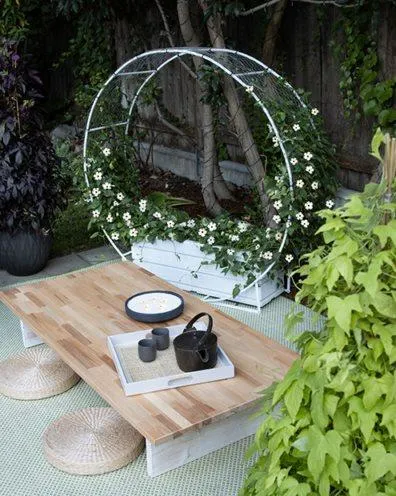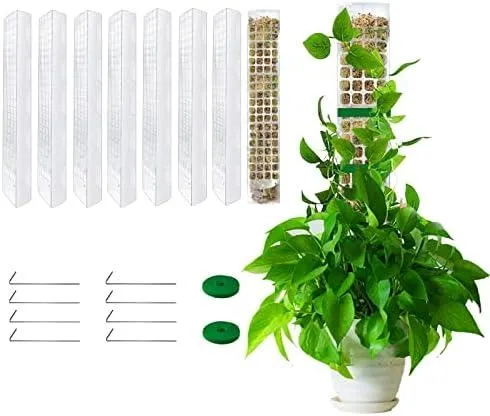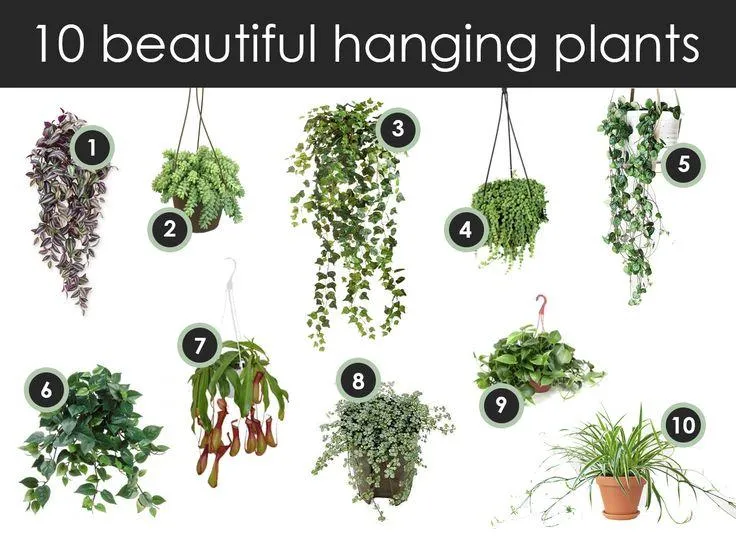Everything You Need to Know About Creating a House Plant Wall
If you’re thinking about transforming a bare wall in your home into a lush, green house plant wall but feel unsure where to start, you’ve come to the right place. In this article, I’ll answer all your questions about planning, installing, and caring for a successful plant wall. By the time you’re done reading, you’ll have the confidence and know-how to bring this trending interior design element to life.
Pros and Cons of a House Plant Wall
Let’s kick things off with weighing the pros and cons, yo. The pros are that a plant wall basically turns an empty space into an instant indoor garden. It fills your home with fresh air, greenery, and that earthy vibe. No doubt, wall plants are also known to boost mood and reduce stress and anxiety levels. From my experience in interior design, clients always feel they’ve made a good investment in their well-being after installing a plant feature.
On the other hand, plant walls do require a bit more effort to maintain than your average potted plant on a shelf. The cons are that you’ll need to water and monitor these plants closely since it can be harder to access them all compared to single pots. Pests are also more likely to spread rapidly across a whole wall setup if not checked early on. So you’ll have to stay on top of pest and disease prevention.
Choosing the Right Plants
When selecting plants for your green wall, pick varieties known to thrive in low-light indoor conditions. A few top choices are:
- Pothos – One of the heartiest and easiest houseplants. Its trailing vines look dope hanging on the wall!
- Philodendron – With their big, glossy leaves, philodendrons really jazz up a space. They come in lots of varieties too.
- Spider Plant – Thrives with minimum fuss. Plus, its grass-like leaves and tiny plantlets make it bush out nicely on the wall.
- Peperomia – These little cuties come in so many fun shapes and colors. I find them kind of relaxing to look at.
- English Ivy – Its tendrils will cascade down beautifully. Watch for potential pest issues though.
A mix of textures, leaf shapes, and sizes will result in a more artistic and natural looking wall setup. So pick a variety of the above plants if possible. Just don’t choose plants that get too huge over time.
Creating the Base
For the base, you’ll need a waterproof surface that allows drainage. Plywood attached horizontally to the wall works well, secured with construction adhesive and screws into wall studs for reinforcement. Always measure your wall space carefully first to determine the ideal plywood dimensions.
Then to allow excess moisture to drain, lay a layer of landscape fabric or ponding membrane material over the plywood. Finally, add a 2-3 inch layer of an absorbent medium like coarse gravel, expanded clay pellets, or compressed coconut husk chunks on top for the plant roots to grow into. Voila, you’re basically done with construction! Tastes vary, but I think an eclectic blend of textures looks sick for this layer.

Mounting and Arranging the Plants
Now comes the fun part – playing plant stylist! Most wall planters attach to the base securely with screws for a more permanent look. But for flexibility, wire baskets hung with hooks work nicely too. You can rearrange as the plants grow in.
When placing plants, start with taller varieties at the bottom and work your way up with shorter types as you go higher. Leave some space between plants for optimal growth. And strategically mix textures, colors and trailing vines throughout for visual interest. Step back often to view your composition from afar as you work.
Once arranged, water the planting medium well to thoroughly soak it. Then mist the plant leaves frequently as they adjust to their new indoor habitat. Be gentle and patient during this transition period.
Caring for Your Wall Garden
For routine care, fertilize monthly in the growing season with a water soluble house plant formula. Check soil moisture daily – the medium should dry out slightly between waterings before re-soaking. Wipe down leaves occasionally to remove dust.
Prune off any dead or diseased parts right away, and cut back leggy growth to keep shapes full and bushy. Inspect closely for pests every few weeks, isolating and treating any affected plants promptly if issues appear. A tidier wall means fewer hitchhiking bugs, so remove fallen leaves when spotted.
Rotate planters periodically to ensure even light exposure as plants grow. And repot into larger pots or baskets when roots start to fill their containers. Over time, you may need to replace plants that outgrow the setup with new specimens. But with care, your plant wall should stay dazzling for seasons to come!
Troubleshooting Common Issues
No plant setup is totally drama-free. Here are some tips for trouble you may face:

Pests:isolate affected plants, shower them with water to remove bugs, spray with insecticidal soap or neem oil as needed.
Brown leaf tips:check pH levels and adjust if off, may be from hard water, flush soil regularly.
Yellow leaves:sign of over- or under-watering, check moisture meter and alter your routine accordingly.
Poor growth:check light levels, rotate plants weekly, it could simply be that some varieties don’t get along or need more sun.
Mold/fungus: improve air circulation, wipe down with hydrogen peroxide, change out wet medium.
With some trial and error, you’ll get the hang of maintaining a happy, healthy plant wall in no time. I hope this covers basically everything you need to know to plan and care for yours successfully!
Let me know if you have any other questions. Remember to start small if new to houseplants, then work your way up to more advanced wall setups. It’s all about learning as you go, yo. Green thumbs weren’t built in a day. Wishing you the best of luck with your plant wall – may it bring you years of joy!

Choosing the Right Houseplant for Your Space
| Plant | Light Needs | Water Needs | Size | Notes |
|---|---|---|---|---|
| Pothos | Low | Allow soil to dry between waterings | Trailing vines up to 10 feet | Very easy to care for, good for low-light areas |
| Spider Plant | Low-Medium | Allow soil to dry slightly between waterings | Up to 2 feet tall | Produces spiderlike plantlets, very hardy |
| Snake Plant | Low | Allow soil to dry completely between waterings | Up to 3 feet tall | Very drought tolerant, hardy, air purifying |
| Peace Lily | Medium | Keep soil moist | Up to 2 feet tall | Lovely white flowers, thrives in low-light bathrooms |
| Chinese Evergreens | Medium | Allow soil to dry slightly between waterings | Up to 3 feet tall | Colorful foliage, thrive in low-light spaces |
FAQ
-
How do I build a wall plant?
There are basically two main ways to put plants on a wall. You can use pots that are designed specifically for wall mounting. These types of pots usually have some kind of mounting hardware already built in, so you just need to screw or hang them onto the wall. The other option is using strong adhesive to stick regular pots directly onto the wall. You’ll want to use an adhesive that can hold the weight of soaked potting soil and the plant. Is that clear enough? Let me know if you need any other tips!
-
What types of plants work well on walls?
Succulents and air plants (Tillandsia) are perhaps the most well-known plants for walls. They don’t need tons of water or care, so they make for low maintenance wall greenery. Pothos and spider plants also do nicely mounted vertically. Surprisingly, some veggies such as tomatoes, beans and strawberries can even grow on walls with the right support. At the same time, peace lilies, english ivy and pothos are all good choices that don’t mind less-than-perfect drainage. The key is choosing plants that won’t get too heavy when watered.
-
Is it difficult to care for wall plants?
It kind of depends on the plant type and your own skills. Many compact, drought-tolerant types like succulents are incredibly easy. The drainage is certainly harder than normal pots since water has nowhere to go but down the wall. Still, if choose the right plant and water carefully, it’s really not too difficult. A heavy rainfall could possibly cause a mess though. Using drip irrigation or self-watering pots helps reduce maintenance needs. So in summary – it takes some effort but is very doable with a little practice.
-
How do I water wall planters?
There are a few main methods. Watering from the bottom by placing the potted wall planters in containers of water works well for many. Just be sure to let them soak 10-15 minutes. Drip irrigation feeder tubes are also awesome for walls since the water drips slowly. Using a water breaker or spray bottle works too for some plants – aim the water only at the soil surface. Top watering usually works fine for drier plants. The key is watching for excess drips. Maybe use a towel underneath just in case! Mist misting plant varieties who like humidity.
-
Will wall plants damage my walls over time?
As long as your wall and adhesive or mounts can hold the weight, wall plants are quite safe for interior walls. The moisture levels would need to be pretty outrageous to cause damage. Outdoor walls may possibly experience more issues depending on the materials. For example, very porous materials like unfinished wood could soak up too much water in heavy rain. However, most modern siding and designs stand up well to moderate outdoor plant display. Be on the lookout for issues and change mounts if stuff gets heavy. Regular inspection helps prevent any potential wall plant problems.
-
How far from the wall should I space my plants?
The spacing between plants will vary based on type and size. As a general rule, leave at minimum 6-12 inches between smaller potted plants and the wall surface. Wider spacing of 1-2 feet is best for larger hanging baskets or trailing vines. This gives room for airflow and makes it easier to care for individual plants. Another stunning option is mounting plants in staggered rows so they overlap slightly as they grow. Proper spacing prevents overcrowding and helps reduce risks of disease or pest issues. I’d be happy to advise spacing needs for your specific wall plants.

-
What is the best wall to use for plants?
Exterior walls receiving direct sun and rain clearly present more challenges than interior spaces. Still, many exterior walls can work well with the right plants and maintenance. Masonry, brick and stone are extremely durable options that withstand moisture extremely well. Even modern composite siding holds up nicely in many climate zones. Without doubt, north-facing walls tend to be cooler and less stressful environments for wall plants. Indoors, nearly any solid surface can display wonderful greenery – from drywall and plaster to concrete, tile and wood paneling. The key outdoors is choosing tough, low-water plants and keeping an eye out for issues.
